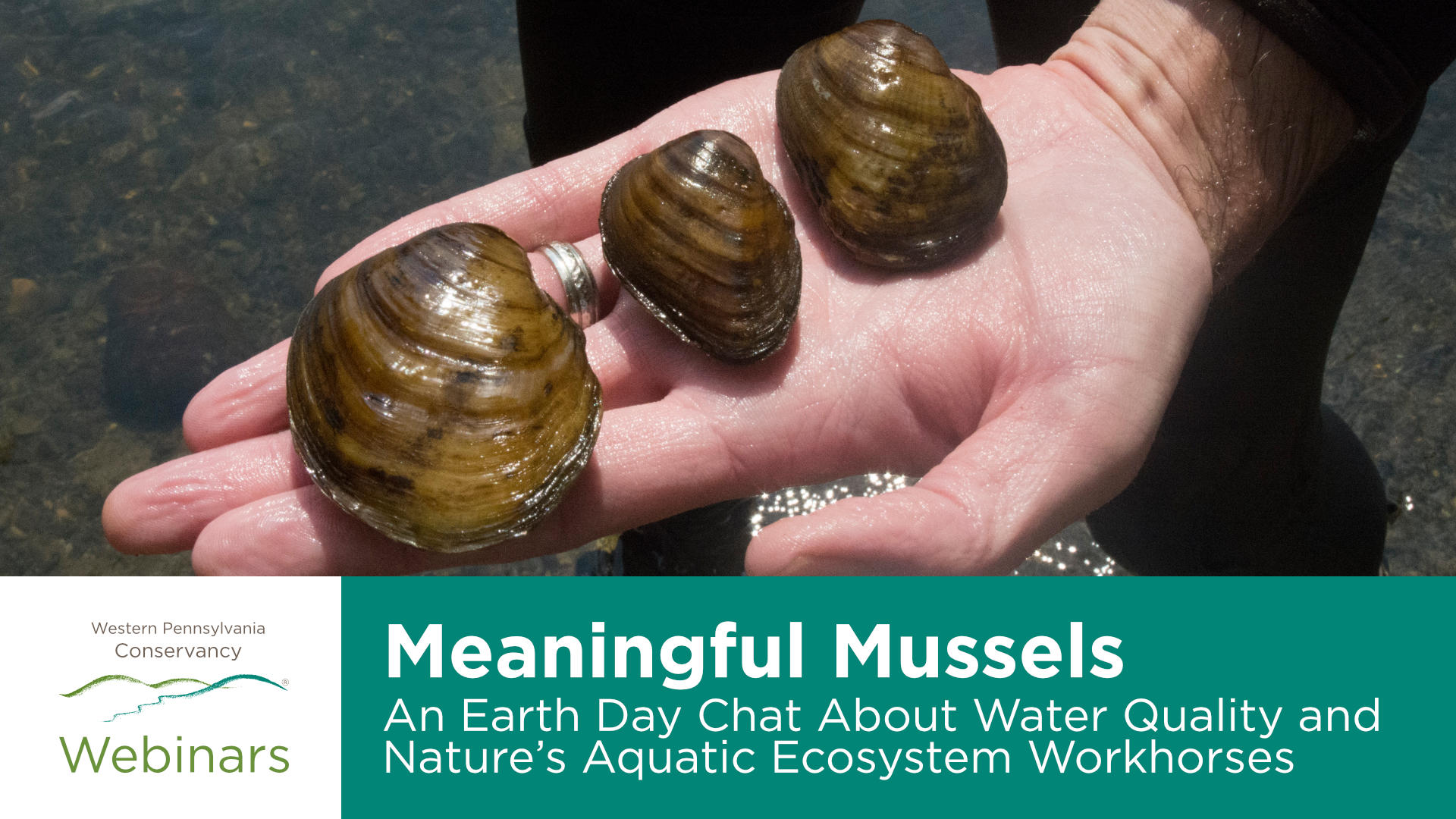
How do Western Pennsylvania Conservancy’s scientists know that there is good water quality in a stream or river? Or how can conservationists tell that a waterway or watershed is experiencing long-term improvements and recovering from years of industrial waste and mine drainage pollution? One surefire, effective and natural way is to survey the bottom of a river or stream for the presence of freshwater mussels.
As natures filter feeders, freshwater mussels shape aquatic ecosystems by purifying water as they breathe and feed, providing food for wildlife and living up to 100 years. As such, the presence of many different mussel species can tell us a lot about the water quality of a waterway and other important factors, especially when mussel populations are found in various stages of life.
In this Earth Day webinar, you’ll discover more about the importance of freshwater mussels, learn about some of the projects where the Conservancy and its partners are working to protect mussel populations, and find out about efforts to move mussels to improve water quality. Join Conservancy staff, Director of Aquatic Science Eric Chapman and Aquatic Zoology Coordinator Mary Walsh, for this lively discussion on the history of our work with and importance of freshwater mussels in local rivers and streams. We’ll also share how you can help.
About the Presenters
Eric Chapman, Senior Director of Aquatic Science
Eric Chapman has been the Conservancy’s director of aquatic science for 15 years. His responsibilities include overseeing and planning the many survey, monitoring and research projects in streams and rivers throughout Western Pennsylvania. Eric’s background is in fisheries and wildlife resources, and hold degrees in biology and environmental science.
Mary Walsh, Aquatic Zoology Coordinator for WPC and PA Natural Heritage Program
Mary has worked at WPC for nearly two decades on aquatic ecology projects and invasive species management and tracking. She will discuss efforts to remove invasive species at WPC’s properties and through the Lake Erie Watershed Cooperative Weed Management Area.
